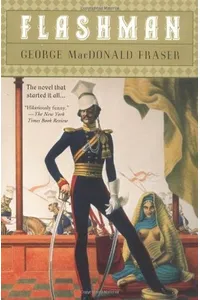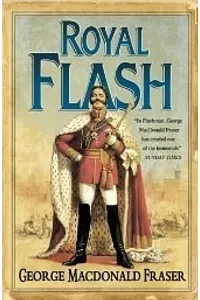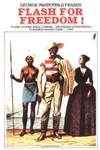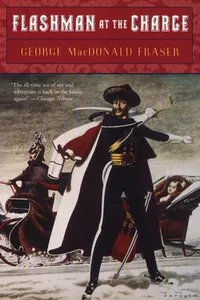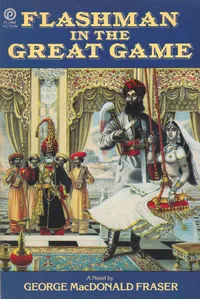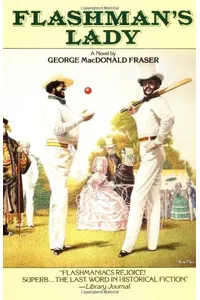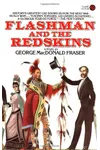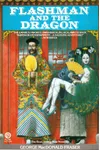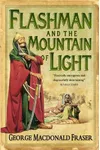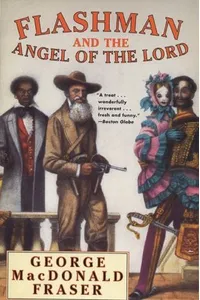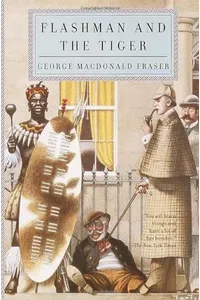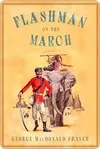Step into the scandalously entertaining world of The Flashman Papers, where a cowardly cad named Harry Flashman bumbles through the 19th century’s grandest historical events with a wink and a smirk! Penned by George MacDonald Fraser, this historical fiction series blends meticulous research with biting satire, offering a rollicking ride through British imperialism’s highs and lows. Whether you’re a history buff or just love a good antihero, Flashman’s misadventures are sure to delight.
Unlike traditional tales of heroic derring-do, The Flashman Papers flips the script. Harry, a self-confessed scoundrel, somehow emerges as a decorated war hero despite his best efforts to flee danger. It’s a fresh, irreverent take on historical fiction that’s as educational as it is uproarious.
How The Flashman Papers Began
In 1966, Scottish journalist George MacDonald Fraser, tired of the daily grind at The Glasgow Herald, had a wild idea: resurrect Harry Flashman, the boorish bully from Thomas Hughes’ 1857 novel Tom Brown’s School Days. Fraser reimagined him as a roguish antihero, weaving his fictional exploits into real historical events. Written in 90 hours of after-work bursts, the first novel, Flashman, hit shelves in 1969, sparking a 12-book series that charmed readers and critics alike, including P.G. Wodehouse, who hailed it as a literary gem.
Fraser’s inspiration came from his love of history and a desire to poke fun at Victorian ideals. By framing the series as Flashman’s memoirs, discovered in a Leicestershire tea chest, he crafted a clever narrative device that lent authenticity and humor to the tales.
The Heart of The Flashman Papers
The series spans 1839 to 1894, with Flashman stumbling through pivotal moments like the First Afghan War and the Charge of the Light Brigade. Key books include Flashman (1969), where Harry’s cowardice in Afghanistan ironically earns him glory; Royal Flash (1970), a swashbuckling romp involving Otto von Bismarck and Lola Montez; Flash for Freedom! (1971), tackling the slave trade with dark humor; and Flashman at the Charge (1973), where his accidental heroics shape the Crimean War.
Fraser’s themes are as bold as his protagonist is craven. The series skewers British imperialism, exposing its arrogance and folly through Flashman’s cynical lens. Harry’s unapologetic flaws—racism, misogyny, and classism—mirror the era’s attitudes, making him a flawed yet oddly honest narrator. The prose sparkles with wit, blending adventure, comedy, and historical detail, while footnotes ground the fiction in fact, delighting readers who love learning with their laughs.
The settings, from Kabul’s battlefields to London’s gaming halls, are vividly rendered, thanks to Fraser’s research at Trinity College Dublin. Whether dodging assassins or seducing adventuresses, Flashman’s escapades keep the pace brisk and the stakes high, all while poking fun at the absurdity of empire.
Why The Flashman Papers Resonates
The Flashman Papers redefined historical fiction by embracing an antihero who’s as flawed as he is fascinating. Fans adore its blend of humor and history, with some mistaking the first novel for a real memoir due to its convincing detail. The series inspired parodies like Blackadder’s Lord Flashheart and earned Fraser an OBE for his literary contributions. Its unapologetic take on colonialism and human nature remains relevant, offering a sharp critique wrapped in rollicking fun.
Despite only one film adaptation, Royal Flash (1975), the books’ influence endures, captivating readers who crave stories that don’t shy away from the messy truth of the past. For those seeking a fresh perspective on history, Flashman delivers with a devilish grin.
- Publication Years: 1969–2005
- Number of Books: 11 novels, 1 short story collection
- Notable Praise: P.G. Wodehouse called Flashman a “new planet” in literature
Grab Flashman and dive into The Flashman Papers’ wickedly funny world of historical hijinks! Whether you’re chuckling at Harry’s cowardice or marveling at Fraser’s historical savvy, this series is a must-read adventure.
